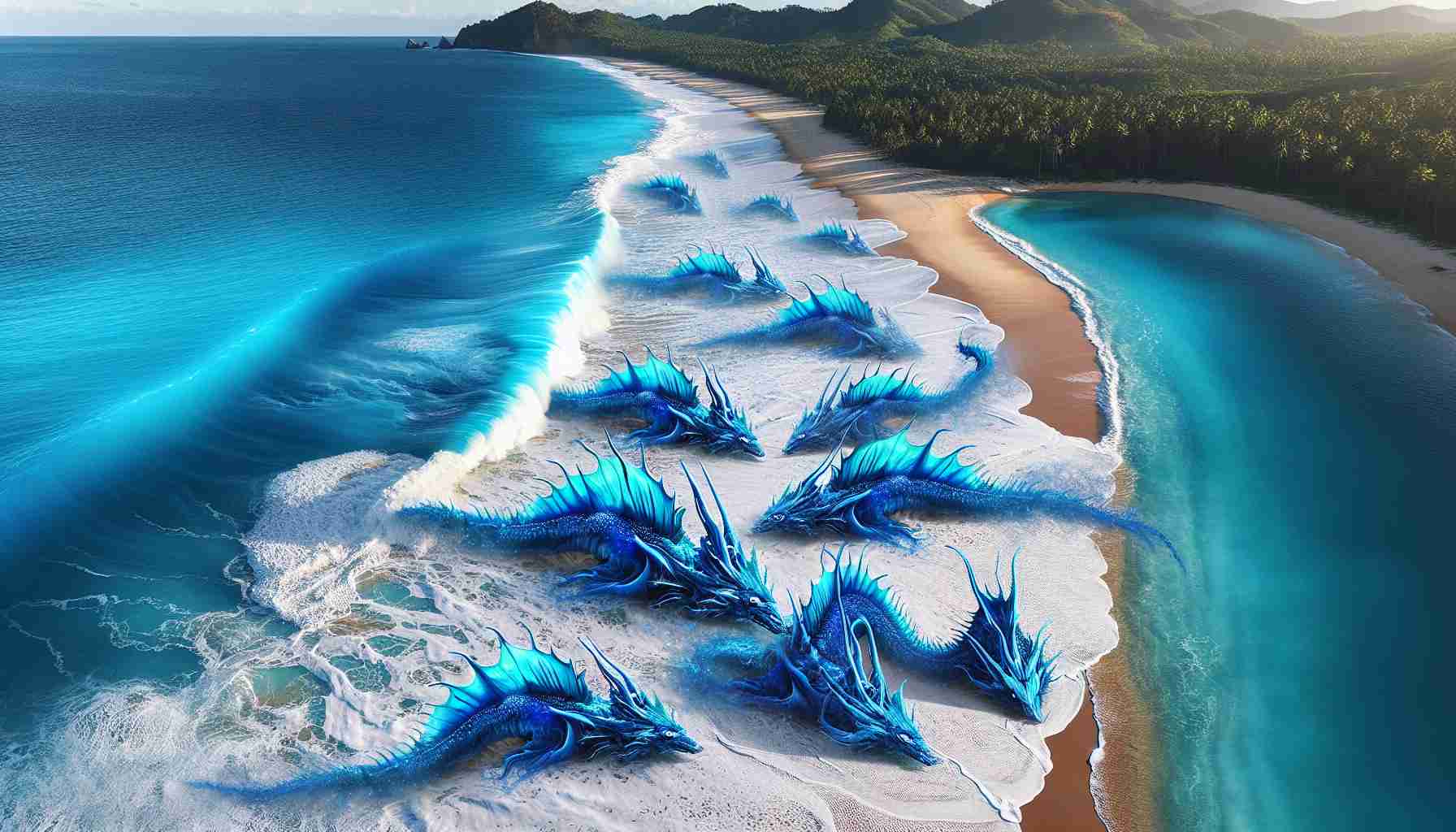
The Enigmatic Appearance of Blue Dragons Along the Coastline
A peculiar sight has been witnessed along the shores of El Médano and Leocadio Machado, as enchanting blue creatures have emerged, captivating beachgoers.
The local authorities are urging caution among visitors frequenting these sandy stretches. Reports have surfaced that the marine mollusks known as blue dragons have made an unexpected appearance, potentially posing a risk of severe skin irritation.
In response, the municipal council has taken swift action by raising the purple flag alongside the traditional yellow flag at these beaches, signaling the presence of harmful marine life in the vicinity. This precautionary measure aims to ensure the safety of all beach enthusiasts and swimmers during this intriguing phenomenon.
As these mesmerizing yet potentially hazardous creatures continue to grace the coastal waters, beach-goers are advised to observe from a safe distance and avoid direct contact to prevent any undesirable skin reactions.
While the emergence of blue dragons adds an element of mystery to the coastal landscape, vigilance and awareness remain paramount in safeguarding the well-being of all those who revel in the natural beauty of these shorelines.
The Enigmatic Appearance of Blue Dragons Along the Coastline Unveils New Wonders
A recent discovery has unveiled fascinating insights into the enigmatic blue dragons that have emerged along the coastline, captivating the attention of curious onlookers and scientists alike. While the initial reports highlighted potential risks associated with these marine mollusks, further investigation has revealed a myriad of intriguing facts that shed light on their behavior and ecological significance.
Key Questions:
1. What attracts blue dragons to the shores of El Médano and Leocadio Machado?
Blue dragons are known to be pelagic creatures, typically inhabiting deep ocean waters. Their sudden appearance along the coastline raises questions about the environmental factors that might be influencing their migration patterns.
2. How do blue dragons defend themselves against predators and what role do they play in the marine ecosystem?
Despite their delicate appearance, blue dragons possess unique adaptations that enable them to defend against potential threats in their environment. Understanding their ecological role is crucial for preserving the balance of marine ecosystems.
Key Challenges and Controversies:
One of the primary challenges associated with the presence of blue dragons is the potential conflict between public fascination and ensuring the safety of beachgoers. Balancing the need for conservation efforts with public awareness and safety measures poses a complex challenge for local authorities.
Advantages:
The sudden appearance of blue dragons presents a rare opportunity for researchers and conservationists to study these elusive creatures up close. Their presence serves as a reminder of the rich biodiversity that exists within our oceans and the need to protect fragile marine habitats.
Disadvantages:
The influx of blue dragons along popular beaches may disrupt the usual activities of beach visitors and pose risks of skin irritation if proper precautions are not taken. Managing public perception and ensuring responsible behavior towards these creatures are key challenges faced by local authorities.
For more information on marine conservation efforts and fascinating marine life discoveries, visit National Geographic. Explore the wonders of the ocean and stay informed about ongoing research and initiatives to protect our marine ecosystems.